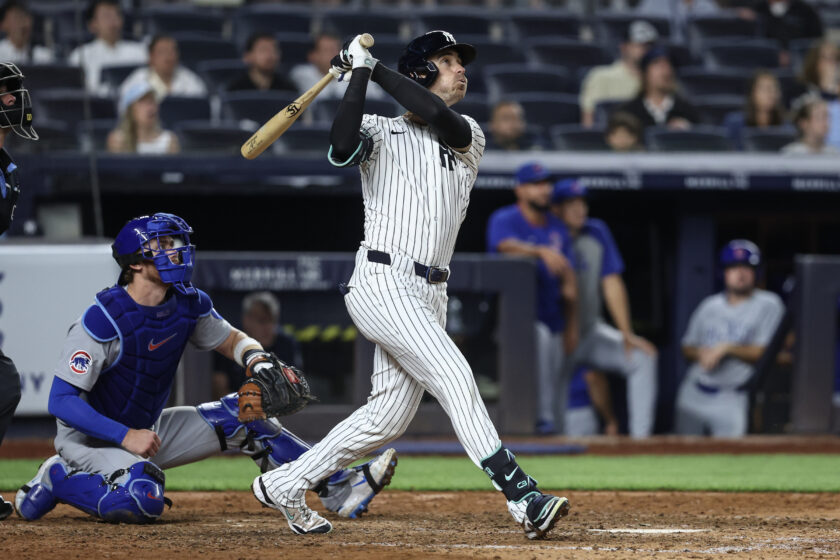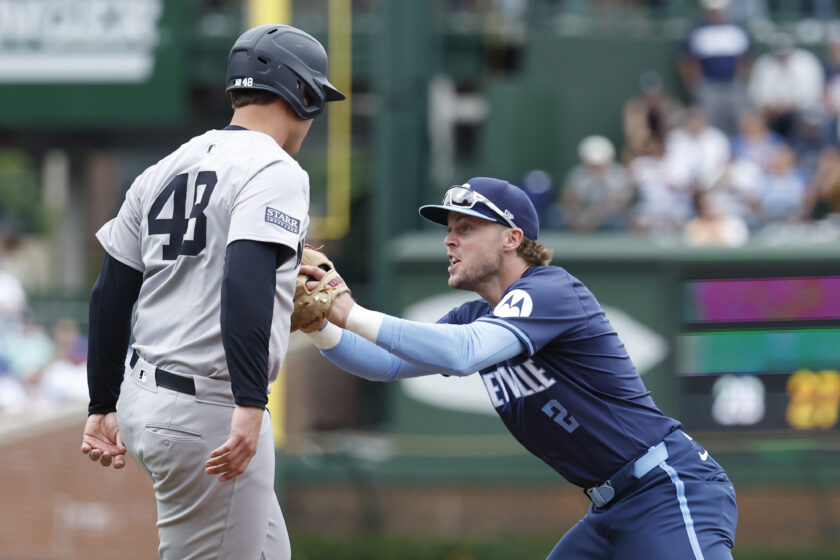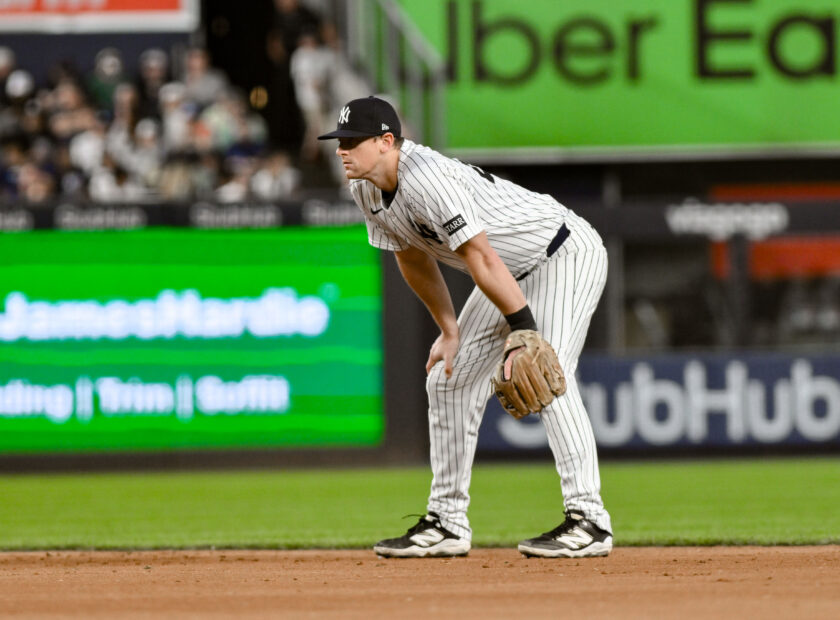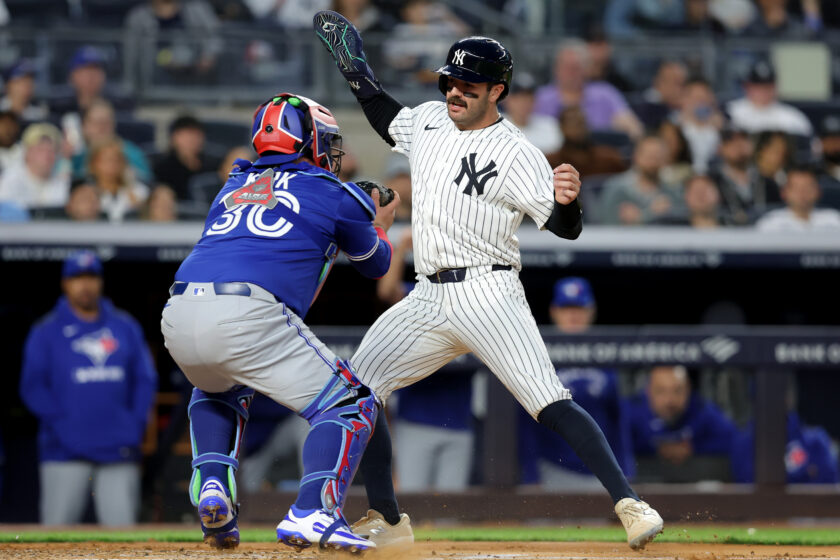Can Chad Green’s cutter give him a leg up in the New York Yankees rotation battle?
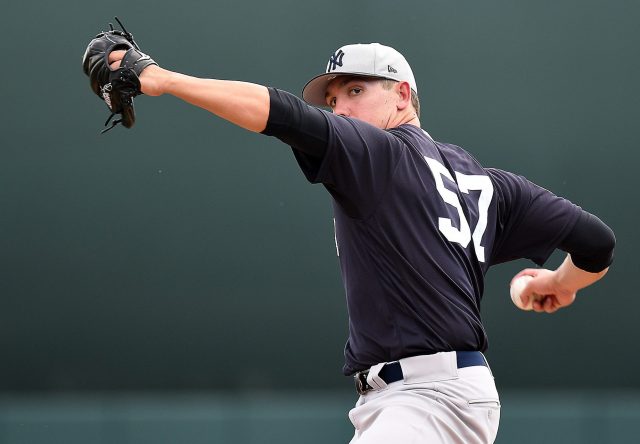
After working hard on a new cut fastball, could the addition help Chad Green‘s case for the New York Yankees’ rotation?
[dropcap]I[/dropcap]n Chad Green’s first cameo with the New York Yankees last season, the righty showed some excellent flashes of encouragement.
In three starts between August 3 and August 21, against the New York Mets, Toronto Blue Jays and Los Angeles Angels, Green struck out 18 batters over 15.2 innings while only giving up four earned runs (2.30 ERA).
[sc name=”Yankees Link Related” link=”elitesportsny.com/2017/02/27/new-york-yankees-luis-severino-draws-birthday-gift-didi-gregorius/” text=” Luis Severino draws birthday gift for Didi Gregorius (Video)” ]
After that, however, Green gave up four home runs in his final two starts before being shut down with right elbow pain. With Green healthy and spring training underway, he has an opportunity to win a spot in the rotation, but has some work to do in regards to mixing his pitches.
Last season, Green relied profoundly on his fastball) and while it has some life at 95 mph, his opposition hit .295 off the pitch including an isolated power average against of .359 — which comes as no surprise.
In a scouting report conducted in 2015 by Baseball Prospectus, baseball scout Tucker Blair affirmed that Green’s fastball “lacks the movement and deception to provide consistent value” and that it was “easily barreled when he missed spots.” Kind of like here:

In the first pitch of that highlight, you could see Gary Sanchez place his glove towards the outside part of the plate before the pitch ran into the wheelhouse of Orioles’ slugger Pedro Alvarez. Next thing you know, it’s headed towards Eutaw Street.
That contest was also a game in which Green used his four-seam fastball 50 percent of the time and was completely hammered around by the O’s (5H, 4ER, 1.2 IP). When he brought the cutter — a pitch he developed during the middle of his stint with Triple-A Scranton/Wilkes-Barre last season — into consistent use, however, things worked out for the better.
In 2016, batters maintained an isolated power of zero off Green’s cutter (out of 126 pitches) which coincided with a slugging percentage against of .250, the lowest among his six-pitch armory.
[sc name=”Yankees Center” ]
During outings in which Green used his cutter 18 percent of the time or more (five games, three starts), he registered a 2.86 ERA and struck out 29 batters in 22 innings of work. In appearances he used it less than 18 percent of his total pitches, Green’s ERA spiked to an abysmal 5.98.
He worked on further developing the pitch this winter and in his first start of the spring against the Baltimore Orioles on Monday, he came out to put it to work.[sc name=”Yankees Center Right” ]
The 25-year-old pitched two innings of scoreless ball while surrendering just one hit in his first taste of live action since his elbow injury. Green made sure to use his conventional mix of a fastball, slider, sinker and that cutter he worked so hard to sharpen.
“That [the cutter] was one of my better pitches today,” Green said following his start. “I am getting more comfortable with it. It was a new pitch for me last year. Throwing it all offseason made me more comfortable with it.’’
If that cutter can develop into the pitch he believes it can turn into, Green could undoubtedly give himself a leg up in a rotation competition that has gotten off to an intense start.
Green, Adam Warren, Bryan Mitchell, Luis Severino and Luis Cessa have combined for 10 innings without allowing a single run while striking out six.
“First time through, everyone has been good, and that’s what you want to see,” manager Joe Girardi said. “Hopefully their offspeed [pitches] will become sharper, they will get through lineups where you have to face them twice and you get a better evaluation of them using all their pitches. But first time through, they all did their job.”
It’s too early to make a calculation on where Green or the ensemble of contestants will end up by April 2, but the righty has shown flashes of dominance with what was a new addition to his arsenal. If he builds on it throughout the month of March, Girardi may have no choice but to include him in his starting five.
[sc name=”Yankees Link Next” link=”elitesportsny.com/2017/02/27/new-york-yankees-luis-severinos-variety-debut-insanely-encouraging/” text=”Luis Severino’s variety in debut is insanely encouraging” ]Christian Kouroupakis covers the New York Yankees and is the Editorial Director for ESNY. Interact with him and view his daily work by “liking” his facebook page and follow him on Twitter. All statistics are courtesy of Baseball Reference.com unless otherwise noted. Don’t hesitate to shoot him an email with any questions, criticisms, or concerns.

